OMAR GALLIANI, LE PARETI DI-SEGNO – LU.C.C.A. MUSEUM
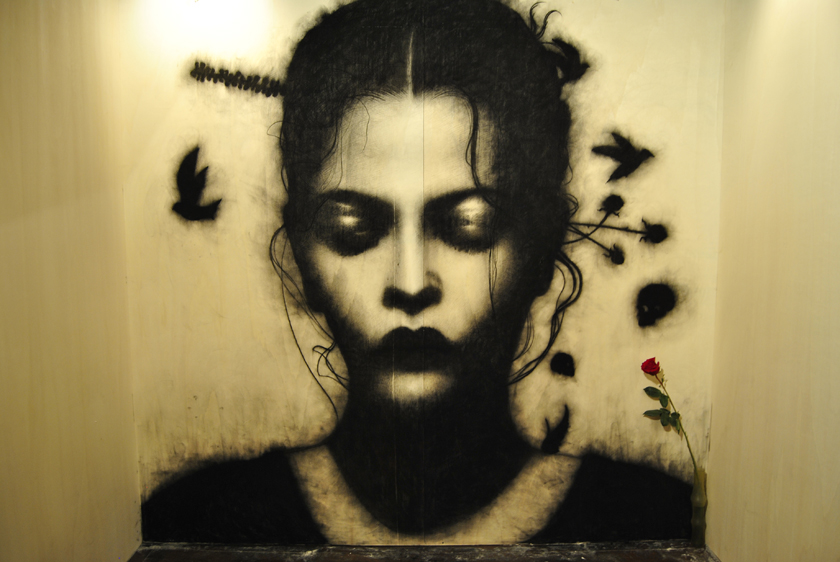
Le Pareti Di-Segno
Racconti, passioni e i voyeurs del tempo
OMAR GALLIANI
Mostra + live performance a cura di Maurizio Vanni
14 dicembre 2010 | 23 gennaio 2011
Lu.C.C.A. Museum / sala Lounge e Underground
Via della Fratta, 36 – Lucca – tel. 0583 571712 / fax 0583 950499
www.luccamuseum.com – info@luccamuseum.com
Text by Vittoria Biasi – All Texts are 1F mediaproject copyright. All Rights Reserved.
Omar Galliani’s drawings slide the paper to pounce which is an emulator of the white wall, they glide on the organic wood talking to the meek writings, they are familiar with the wall touch like a meeting between bodies. His pencil gives birth to pending images between the figurative and non figurative, always expressing his own sorrow for the birth, for the confines, for being in life fixed by the graphite scratch-work. A (red) rose, the movement of a line that crosses the background or the body, broaden the spatial sensation, they create an association path, a philology for the returning element. The meeting with the real life originates the pictures, in compliance with the constant conflict between the sunlight and the darkness. The obscurity is protective, unassuming, it unveils the inability to go through the mystery: it is a mate, a companion. Santa Lucia is a subject drawn from life and it takes back the sacred into the contemporary body. The art of Omar Galliani tells that the mystery of the figure goes through the millennia without damaging its enigma notwithstanding the study about paintings, sculptures or the cinema as well with its close-up shots. The cradle of light that shapes the face of Santa Lucia, offers the design of her eyes that averts her gaze: her eyelids are lowered, her face has the look unrevealed, useless and looking into her own self. The work brings in the connection with her name, suggesting our collective recollection. By tradition the saint activates a twofold sight: her eyes are open onto the world and her hands hold a dish with two eyes painted on it. The artist enters into the visual relation dissimulating the title of the work by a succession of marks that blacken the delicate parts. Galliani has a live stroke. By a swift and light stroke he could have reached the expressivity, the dynamism of the image. On the contrary the artist has a preference for backgrounds of chiaroscuro through which he traces the geography of his study. Recollecting Foucault and referring to the study of Elena Bonelli (Segni Particolari. The picture of the face, the imaginary of surname, 2004, Quattro Venti, Urbino) I can say that Galliani names and christens his own work with a new denominative purpose. Santa Lucia is a work site-specific where the seeing is the meeting of all artistic languages; it has been thought for the hall LOUNGE inside the Lu.C.C.A.Museum. Galliani drew Santa Lucia over four walls 3.30 m. long and 4.95 m large, hard working for six days together with the posing model and his pencil which he entrusts his own beyond. Galliani has it that “The temporality of the works and men finds his own identity in the graphite so far consigning itself to the oblivion along a track that from Altamira’s to nowadays show himself by means of the drawings”. The creation of the work has been participated, through a strategy that underlines the fundamental problems of the seeing, of the involvement, beloved to Duchamp. A technological solving like the web-cam and the eyehole of the (closed) door permits to the visitors to follow the artist emotions in realizing the work, a kind of mysterious Etant données: Le gaz d’eclairage (Duchamp). The audience was able to watch on the (outside) screen or through the eyehole, the birth of a face, whose look is clandestine. The perimetrical trip around the mystery culminates around the hegemony of the revealed hideout.
Vittoria Biasi
Translated by Salvatore Rollo – at salvatore_rollo@fastwebnet.it
Testo di Vittoria Biasi
I disegni di Omar Galliani scorrono sulla carta da spolvero emula della parete bianca, scivolano sul legno naturale in dialogo con le scritture sommesse, conoscono il contatto con il muro come incontro tra corpi. Dalla sua matita nascono immagini sospese tra il figurativo e il non figurativo, portando sempre il dolore della nascita, del confine, dell’esistere determinato dal segno della grafite. Una rosa (rossa), il movimento di una linea che attraversa lo sfondo o il corpo, ampliano la sensazione spaziale, creano un percorso associativo, una filologia dell’elemento ritornante. Le immagini nascono dall’incontro con il reale, secondo un attraversamento del costante conflitto luce- tenebre. L’oscurità è protettiva, umile, rivela l’incapacità di attraversare il mistero: è compagna, complice. Il soggetto di Santa Lucia è un disegno dal vero e riconduce il sacro nel corpo contemporaneo. L’arte di Omar Galliani testimonia che il mistero della figura ha attraversato i millenni senza che lo studio della pittura, della scultura o lo stesso cinema, con i primi piani, abbiano potuto intaccare il suo enigma. La culla di luce, delineata sul volto di Santa Lucia, offre il disegno di occhi che si sottraggono: le palpebre sono abbassate, il viso ha lo sguardo non rivelato, negato e rivolto nel proprio sé. L’opera introduce il rapporto con il nome, evocando lo spazio della reminiscenza collettiva. Nella tradizione la santa attiva una duplice vista: ha lo sguardo aperto sul mondo e tra le mani regge un piatto su cui sono raffigurati due occhi. L’artista entra in un rapporto visivo che dissimula il titolo dell’opera con un susseguirsi di segni oscuranti le parti fragili. Galliani ha un tratto vivo. Con una linea svelta, leggera potrebbe raggiungere l’espressività, il dinamismo dell’immagine. Al contrario l’artista predilige campiture di chiaroscuro con cui delinea la geografia della ricerca. Rievocando Focault, e facendo riferimento allo studio di Elena Bonelli (Segni particolari. L’immagine del viso, l’immaginario del nome proprio, 2004, QuattroVenti, Urbino) posso dire che Galliani nomina, battezza la sua opera, con intento denominativo nuovo. Santa Lucia, pensata per la sala Lounge del Lu.C.C.A. Museum, è un’opera site specific, in cui il vedere è l’incontro di ogni linguaggio artistico. Per sei giorni Galliani ha disegnato il soggetto di Santa Lucia su quattro pareti di 3,30 x 4,95 metri, lavorando instancabilmente con la modella in posa e con la matita, cui affida il proprio oltre. “ La transitorietà dell’opera e dell’uomo, dice Galliani, trova nel minerale della grafite la propria identità consegnandosi così all’oblio del tempo lungo una traiettoria che da Altamira ad oggi ha scelto il disegno per ‘mostrarsi’.”La realizzazione dell’opera è stata partecipata, attraverso una strategia che sottolinea la problematica del vedere, del partecipare, cara a Duchamp. Una risoluzione tecnologica, la web cam, e lo spioncino della porta (chiusa) hanno permesso ai visitatori di seguire le emozioni dell’artista nella realizzazione dell’opera, in una sorta di Etant données: Le gaz d’éclairage (Duchamp) misteriosa. Il pubblico ha potuto seguire sullo schermo (esterno) o attraverso il foro della porta, la nascita di un volto, in cui lo sguardo è clandestino. Il percorso perimetrale del mistero si conclude attorno all’egemonia del nascondimento rivelato.
Vittoria Biasi

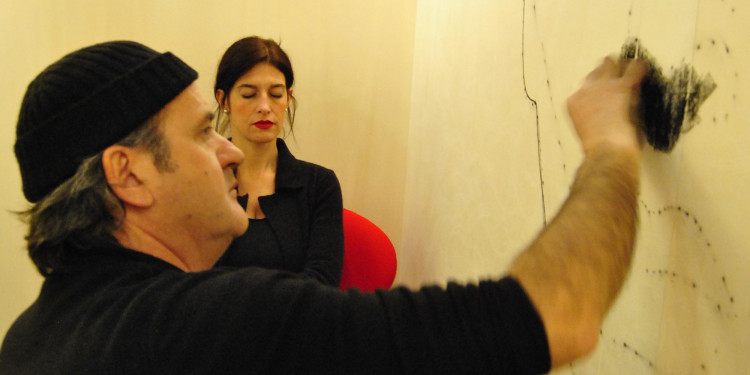
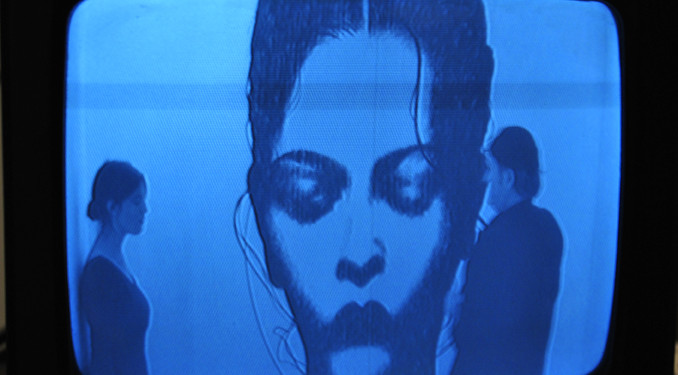
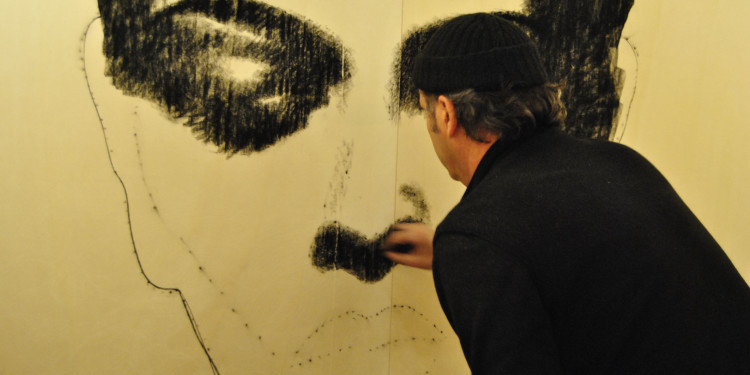
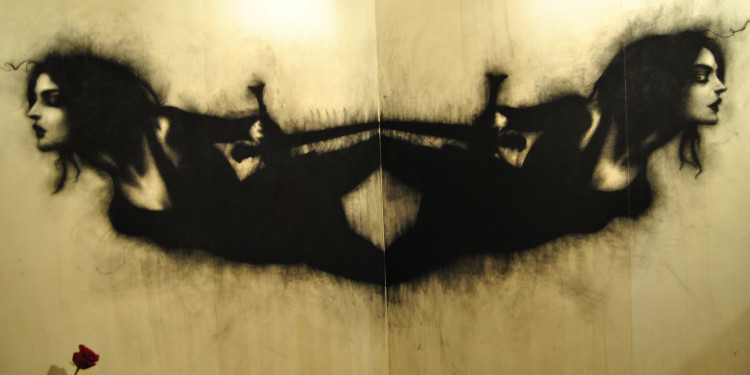
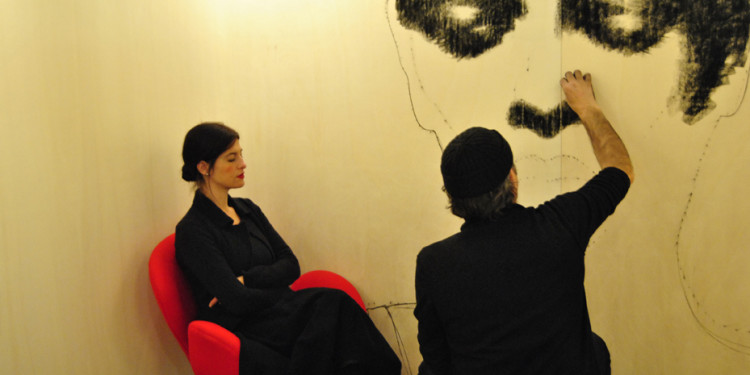
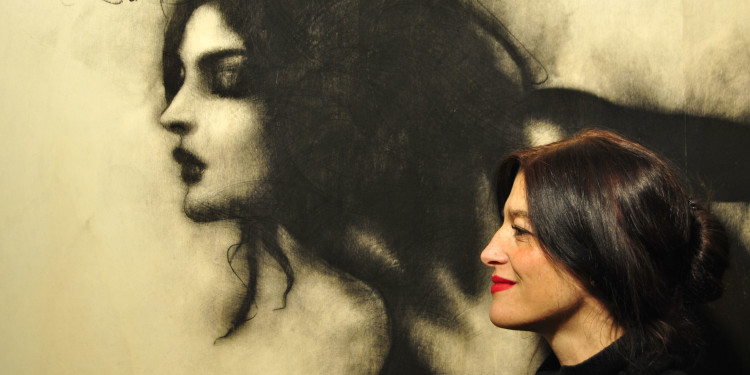
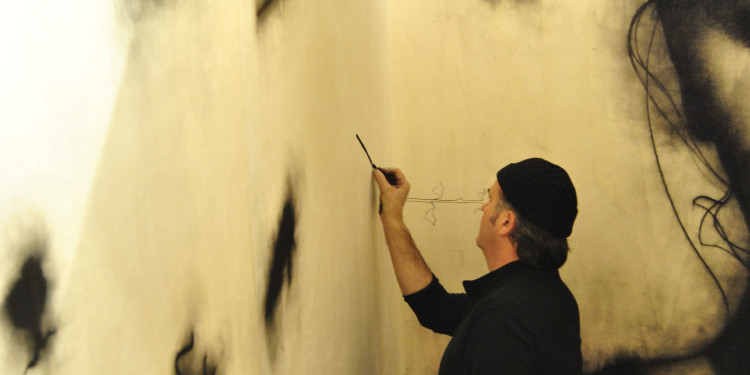
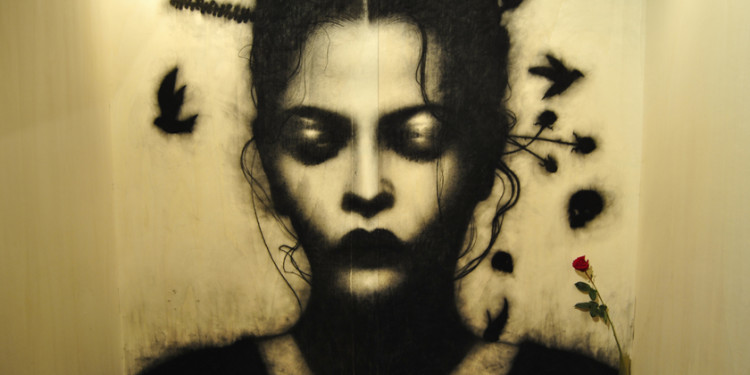
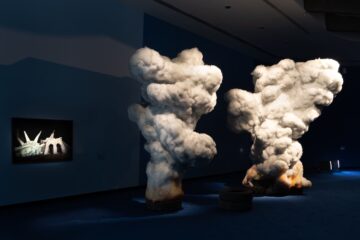


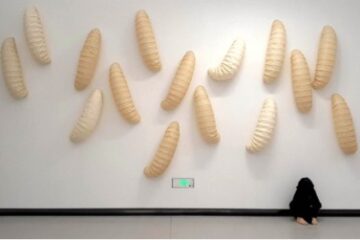

No Comment